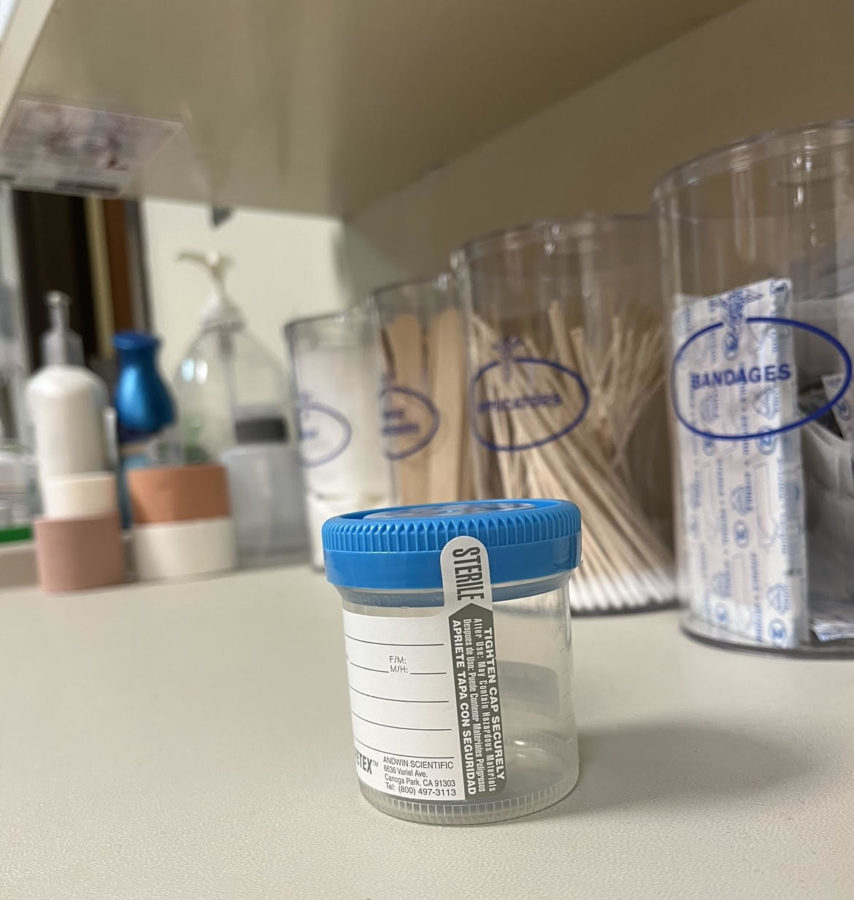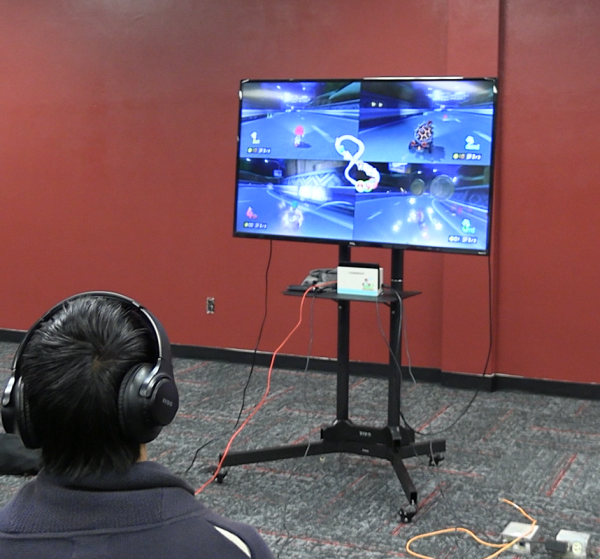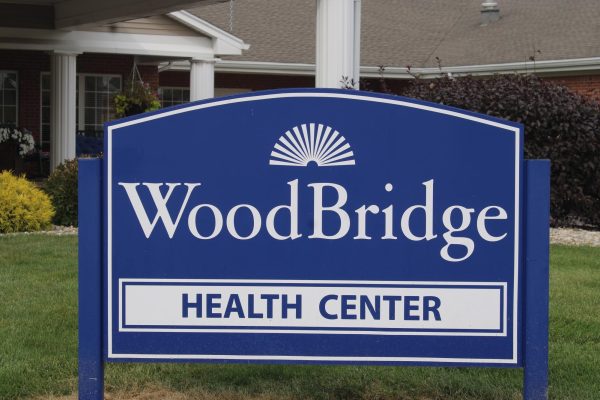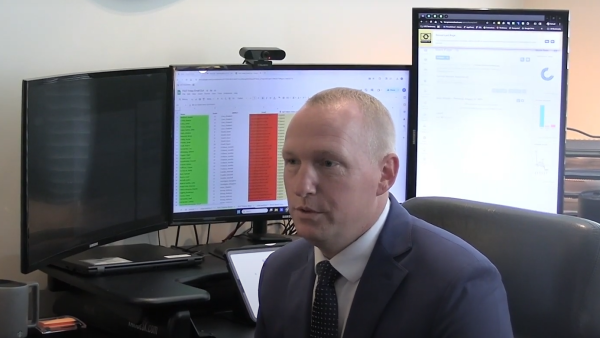LHS Drug Testing: Learn the Facts
If a student is pulled to be drug tested, they are required to provide a urine sample in a jar such as the one above.
According to the National Institute on Drug Abuse, every three in five high school students report that they struggle or have struggled with drug addiction. Although this number is already high, it continues to increase as the years go on. Logansport High School faculty’s has an overall concern for their students.
“Our priority is the safety and well-being of students,” principal Matt Jones said. “Random drug testing can deter drug, alcohol and tobacco use among high school students and maintain a safe and healthy learning environment. Our responsibility is to take proactive measures to protect our students.”
Even though the experience of drug testing might not be ideal, it is important to understand why and how LHS routinely tests their students for drugs.
“The whole experience was both surprising and awkward,” junior Finley Gay said. “From getting picked out of class to the actual testing, it was an odd experience, to say the least.”
So, how does it work? Despite the strong suspicion by the student body, LHS drug testing is completely random. When each student registers for school, there is a box that parents/guardians are able to check. 
When this box is checked, the student is given a number. Contrary to if a students parent check the box, student-athletes and drivers are automatically assigned a number. This number is then put into a computer program that generates numbers kind of like the lottery. When it comes time to pull students for testing, which is normally around every two weeks, this program generates a group of numbers, and those numbers are then linked with the previously mentioned registered student number. Those students are then pulled from class, by a faculty member from the dean’s office.
After being pulled out of class by attendance officer Christian Madson, freshaman Tatianna Jones explains her feelings about the situation.
“I knew I had nothing to worry about,” Jones said. “But the fact I was being drug tested was so nervewracking.”
Students are given water to assist the process, as the drug tests at LHS are urine tests. If a student cannot provide a urine sample while on campus, then said student has 24 hours to return a sample to the nurse’s office. Until this test result is provided to the school, student drivers will not be allowed to drive to school, and student-athletes will be deemed temporarily ineligible from participating in the school’s athletics program. If a student refuses to take the drug test, then the parent/guardian will be called, and the situation will then be in the hands of the parent/guardian and vice principal JD Dubes.
The test is checking for a list of 12-plus drugs, ranging from opioids to methamphetamine. Depending on the situation, the repercussions of failing a drug test at LHS are different, but every student with a positive result back for any of the drugs being tested will receive a call home. If a student driver and/or student-athlete fails a drug test, their consequences are a little bit harsher, compared to a student who rides the bus and is not in any extracurricular activities.
“Students often think, ‘Oh no- I failed my drug test Mr. Binney is going arrest me’ but that is far from the truth,” student resource officer Eric Binney said. “We often spend much more time counseling students, giving them advice, and showing them there are better roads to take compared to yelling at them or punishing them.”
All tests that are taken are confidential, and all results are to remain confidential. Even within athletic teams, unless the athlete deems otherwise. Drivers who fail the drug test are required to take an evaluation from Four County that states the student is not addicted. Until this course is completed, said student is not allowed to drive to school. There are courses at Four County students can be referred to by the dean of students, Cory Cripe, that involve education towards vaping and nicotine addictions if he deems it necessary.
“Students who fail a drug test do not get suspended, they don’t get expelled, nobody does,” Cripe said. “It is basically an early warning sign that parents or guardians might want to sit down and talk to their students about the decisions they are making.”
According to the National Institute on Drug Abuse, more than 106,000 people died from an overdose in 2021 in the United States alone.
“If I could say anything to the student body, it would be to know what you are ingesting,” Dubes said. “You really can never be 100% sure what is in something and you are the number one person to protect yourself.”
It is important to remember that the drug testing protocol is not put in place to punish students. It is put into place to protect students.
“I don’t think the results we have gotten back from a student’s drug test has ever changed the way we feel about that student,” Dubes said. “I mean, we were kids at one point too, kids are prone to bad choices. I can’t sit here and tell you that I have never made a bad choice, I’d be lying to you. Your bad choices do not define who you are.
Your donation will support the student journalists of Logansport High School. Your contribution will allow us to purchase equipment and cover our annual website hosting costs.

As a senior at LHS, Jasmine has been on the Magpie staff for around three years. Throughout this time, she has had many roles and learned a lot about communication...












Imran Ghani • Mar 3, 2025 at 4:19 pm
This article provides a thoughtful look at how Logansport High School approaches drug testing to ensure student safety and well-being. It’s interesting to see how the process works, from random selection to the consequences of failing a test. The focus on counseling and support, rather than punishment, highlights the school’s commitment to helping students make better choices. For more insights on drug testing in hiring, check out Rapidhiresolutions for understanding the broader implications of drug testing!